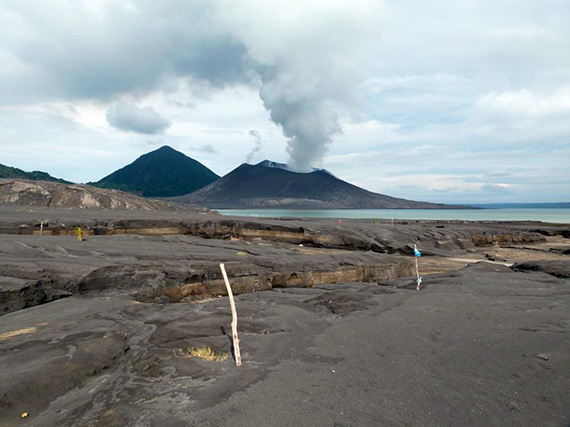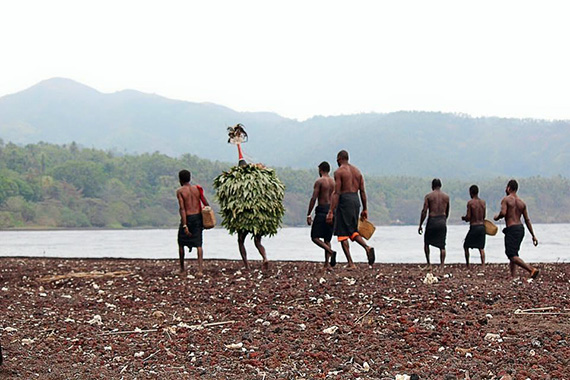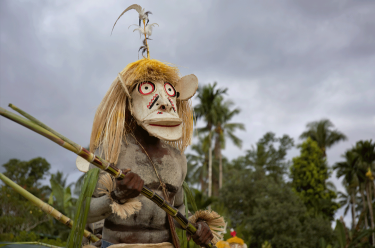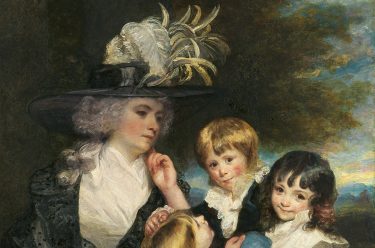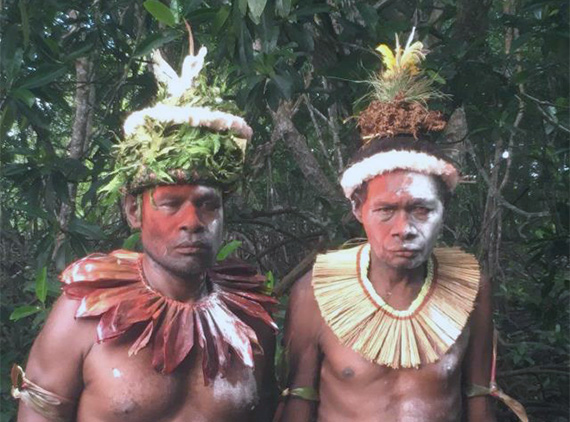
‘A Bit Na Ta’ locates the – source of the sea – Blanche Bay, Rabaul – in the Tolai language of East New Britain. It is also the title of a project commissioned for the upcoming Queensland Art Gallery exhibition ‘No 1 Neighbour: Art in Papua New Guinea 1966-2016’. Comprising a music video installation and performance event, the project will feature newly commissioned songs by leading Australian and Papua New Guinean musicians including the celebrated George Telek. These will draw on the rich oral histories of the Tolai people, transposing into contemporary beats, personal stories of the period between 1875-1975.
Project leader, musician and producer David Bridie shares some more views from his stay in Papua New Guinea
Over the past two weeks we’ve been travelling all around the Gazelle Peninsula and surrounds filming, recording, listening and talking (and chewing Buai). We are in a vain search for a kidolona pirpir-the full story of the past 100 years in Rabaul. This is of course an impossible task. But our historian Gideon Kakabin is passionate about the story needing to told from the Tolai perspective and that’s our pursuit.

George Telek has come up from Raluana to the studio here at Vunaulul and been in for four days of recording new songs especially for the project, ‘Boro’ and ‘Lili ram Kavavar’ and ‘a Bit na Ta’. He’s coming back again today. Yesterday Donald Lessy from Barike came and in played guitar on ‘Boro’ and is helping to sort out the musical and logistical arrangements the ‘Abot a Bitapaka’ Tolai choir song. Donald was a great friend of Glen Lows. Donald is quiet and unassuming, has a smoothness to his guitar playing and we’ve been friends for a long time but have never managed to work on a project together so that was a treat for both of us.
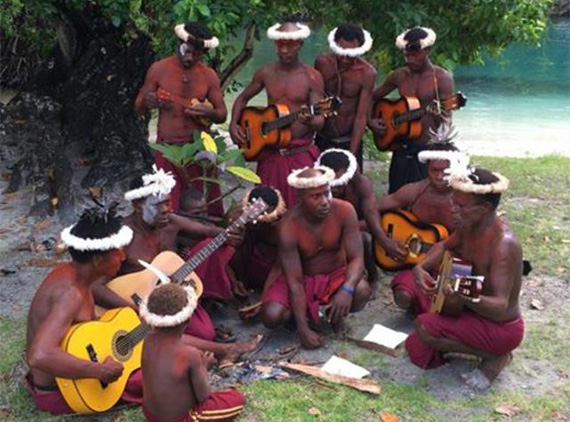
Last week we took the banana boat out to Mioko Island in the Duke of Yorks where we recorded the Gilnata Stringband’s new composition ‘Jack Emanuel’ about the murdered Australian District Commissioner. Gideon had explained the story to the legendary Alan Tobing who went away and wrote the song. We shot a film clip for Gilnata by the lagoon that featured a “varvalaruai” (an acted re-enactment of Jack Emanuel’s unfortunate death after a land dispute at Kabaira on the north coast) as well as recording the songs ‘Oscar Tammur’ and ‘Tutupele’. Gilnata have a history of telling oral history in their stringband songs and the Duke of Yorks style is totally different from the Tolai arrangements even though they are only ten miles away from each other. Miko offers unique vistas over to New Ireland and back to the volcanoes and whilst we were there massive storm blew on the north side of the island over the reef.
We ventured down to North Baining, to Ragaga Bay to Glen low’s block, Glen is buried there. We spent a lot of time sitting on his concrete tomb and chewing the fat. Glen accompanied Telek and I on tours for 15 years to the UK, USA, Solomons and Vanuatu and all round Australia. His son Gareth is the cameraman on this trip and is capturing minutiae, people and panorama with a unique eye. Kaul and Wagi from the Moab Stringband came down and in the varvalaruai tradition acted out old customs down in the mangrove swamps there-the working of abut (lime and clay applied to the face, tanget leaf necklaces, trading of tobacco and coconuts and the like). We recorded all sorts of bush and village ambiences helped because the house backs on to a big mangrove area and at night the insects and frogs create an all embracing sound-a symphony that Graeme Revell from SPK would have delighted in (Revell is a great Australian composer made a seminal electronica album sampling insect sounds!.)
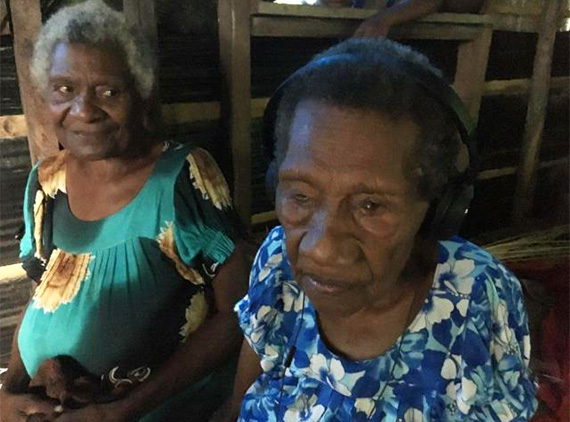
Yesterday we recorded two beautiful old women from Wagi’s village, Bung Marum and Revie Kinkin in Bitabaur who sang an ‘Apinpidik’ for the project. Gideon found notes his mother, Lilak IaKaru had hand written in an exercise book from the 1960s when the Nilai Ra varden broke out from being “just” a women meeting group to joining with the warbete and the mataungan association to form the initial provincial government. In writing it reads, “nau meri i laik sanap wantaim ol man” (Its time for women to stand up and be equal to men) as well a disertation on the need for freedom from fear to be in the constitution. Lila passed away, she was a dynamo. Gideon, George and I look forward to working with curator Lisa Hilli working in ol singsing bilong meri na story bilong em (song of women’s stories). Last night we recorded the 95 year old Lasiel ToRavien (see picture below) playing a range of Tolai garamut drum beats dressed in bilas. In amazing condition for his age, the recording was astonishing as Lasiel played a range of minamai ceremonial Tolai garamut beats that will feature in the soundtrack.
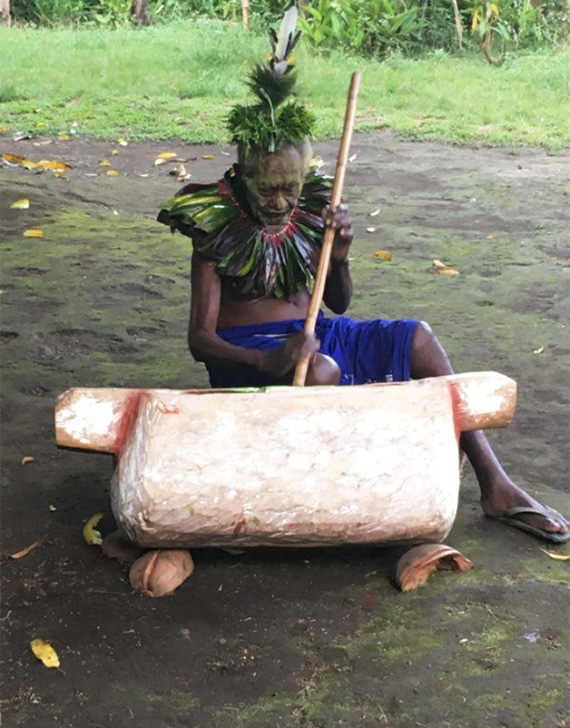
We have been photographing this classic old colonial text, Das Deutche Kolonial Buch, a 1900 book of all the German colonies around the world… frightening really. Gideon’s range of knowledge is a constant inspiration and for me working with George Telek in our 30th year of collaboration is rather special, especially on a project as comprehensive as this. Gideon made the long 5 hour boat trip down to Tol Pantation on the south coast with many descendants of the 2nd 22nd battalion (Lark force) of whom at least 150 were slaughtered having been left to defend Rabaul against the Japanese in 1942.Gideon said it was a very emotional journey with descendants looking for their father or uncles graves.
The volcanoes are always present and we’ve been filming them from a range of different angles. They of course look very different depending on the angle and proximity and their mood transforms Blanche bay. We’ve filmed and recorded sounds from the Namata ceremony at Matupit and will be at the Minamai in Bitabour next week when ten Tumbuans dance the strength of custom, song and dance in these occasions is wonderfully intense and dynamic. We look forward to Anslom and Moab coming into the studio over the next two weeks.
Themes for the a Bit na Ta installation are becoming more apparent, the Tumbuan Society and its inherent artistry of deception (Pidik na Pui), the oceans source, the volcanoes, gardens, the Vunutarai clan systems, the kivung (Tolai village based self-governance) the ‘Apinpidik’, ‘Malira’ and ‘Lili’ styles of song along with Tolai assertiveness in the face of wars, volcanic eruptions and the century long campaign to get their land back and retain it resurfacing constantly (The 6 day war, the Kokopo wars, the Navuneram Incident and the Matungan association etc). Gideon George and I, a whole host of other collaborators are swimming in music, art ,sound recordings, stories, photos and film. So many great songs to work with… there must be an album in this as well as the a Bit na Ta installation at No 1 Neighbour.
David Bridie, Project leader, musician and producer
Part 1 | A Bit Na Ta
‘No.1 Neighbour: Art in Papua New Guinea 1966-2016’
15 October 2016 – 29 January 2017
The exhibition presents work by artists from Papua New Guinea created from the mid-1960s, through Independence in 1975, until today and focuses on the vibrancy of contemporary artistic expression, a direction that is unique in Australia. A key conceptual thread is the importance of the ongoing relationship between Australia and Papua New Guinea with projects profiling ongoing creative relationships between communities and individuals.
‘No.1 Neighbour’ is supported by the Gordon Darling Foundation and through the Australian Government through the Australian Cultural Diplomacy Grants Program of the Department of Foreign Affairs and Trade.
